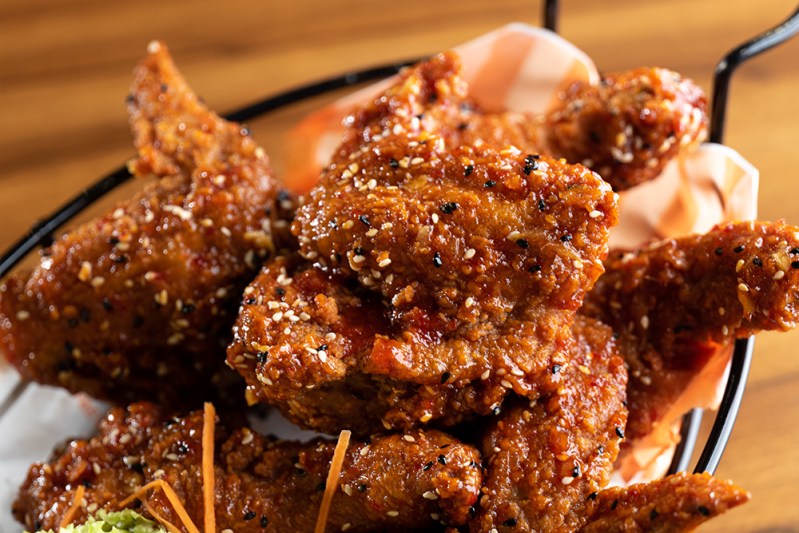
Delivered fresh in takeout boxes or served alongside frosty beer at bustling restaurants, fried chicken is a national obsession in Korea. Historically, chicken consumption was rare in South Korea, and it wasn’t until the 1980s that Korean fried chicken became popular. While Korean fried chicken has similarities to Southern fried chicken, the Korean version is way more diverse in both flavor and variety.
Interested in cooking Korean fried chicken in the comfort of your own home? Here to lend The Manual some expert tips and techniques is Chef Sol Han of Little Mad, an innovative and modern Korean restaurant in New York City. While making fried chicken at home might seem intimidating, the finished product is well worth the adventure. You can reward yourself with the cold beer to pair it with.
Tips to make your Korean fried chicken even better

Seasoning the chicken
Chef Han likes to brine his chicken overnight in a 3 percent salt-to-water ratio. One unique twist he likes is to marinate his chicken in dashi stock or white soy, a type of soy sauce with a lighter and sweeter flavor than dark soy sauce. However, if brined, the chicken must dry out on a rack before being dredged in flour.
Frying the chicken
In Korean fried chicken, flour is often replaced with potato starch or corn starch. The use of starches, especially potato, gives the finished crust a less greasy, and pleasing white color. A pinch of baking powder added to the starch will also help increase crispiness. But do not substitute baking soda. The chicken will have an unpleasant alkaline aftertaste. Chef Han likes to dredge his chicken in seasoned flour consisting of salt, black pepper, cayenne, onion powder, garlic powder, and smoked paprika.
Korean chicken is also usually twice-fried. Chef Han recommends frying the chicken first at a low temperature of 275 F for 10 minutes. Then, let the chicken rest and crank up the fryer to 375 F. Twice-frying produces a crispier crust, according to Kenji Lopez-Alt of Serious Eats, as excess moisture under the coating will continue to rise upon the surface during the first frying process. A second fry will eliminate that moisture. Like all fried foods, you can make Korean fried chicken in a cast iron skillet or a deep fryer.
Sauces and sides

While Korean fried chicken can be served without sauce, the most popular version is yangnyeom, a sweet and spicy sauce made from rich Korean gochujang chili paste. Korean rice syrup, a thick, caramel-colored syrup is also used to create a barbecue sauce consistency. You can substitute with honey if rice syrup is unavailable. Beside sauces, you can also top Korean fried chicken with scallions, chili peppers, peanuts, garlic, and even cheese (preferably a mild white cheese like mozzarella).
While Chef Han prefers his fried chicken without sauce, if he does make a sauce for his chicken, it’s usually a honey butter glaze. To make, combine a 50/50 mixture of honey and melted butter and drizzle on the chicken before eating.
The Korean palate prefers to accompany rich foods with sour pickles. Korean fried chicken is often served with small cubes of pickled daikon radish. These are available at most Korean or Asian supermarkets. If unavailable, any pickled vegetable is a good substitute.
Chimaek (chicken and beer)

To truly appreciate Korean fried chicken, it’s important to understand the unique culture of its country of origin. Unlike American fried chicken, which is generally enjoyed at home or as fast food, Korean fried chicken revolves around drinking and dining out.
This culture is known as chimaek, a combination of the English word “chicken” and “maekju,” the Korean word for beer. Called “hofs” (pubs), chimaek restaurants have become a quintessential part of Korean dining culture. A lighter lager, such as a pilsner, is the best type of beer pairing. If available, try Korean beers such as Hite or Cass for an authentic touch.



